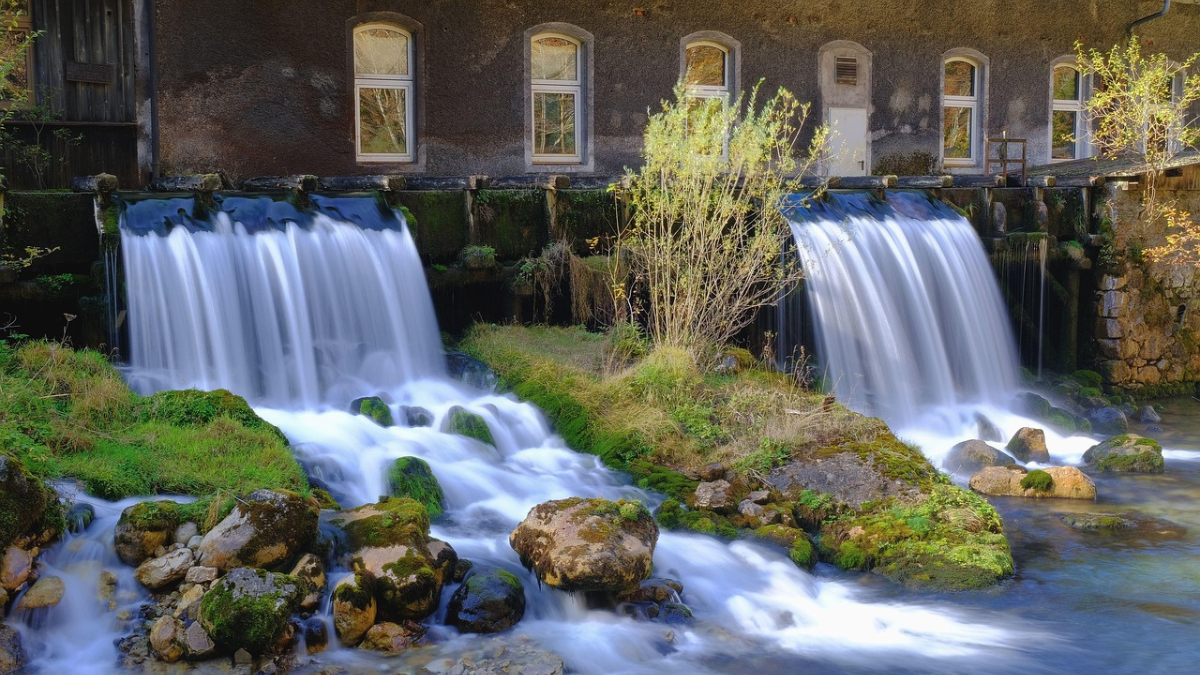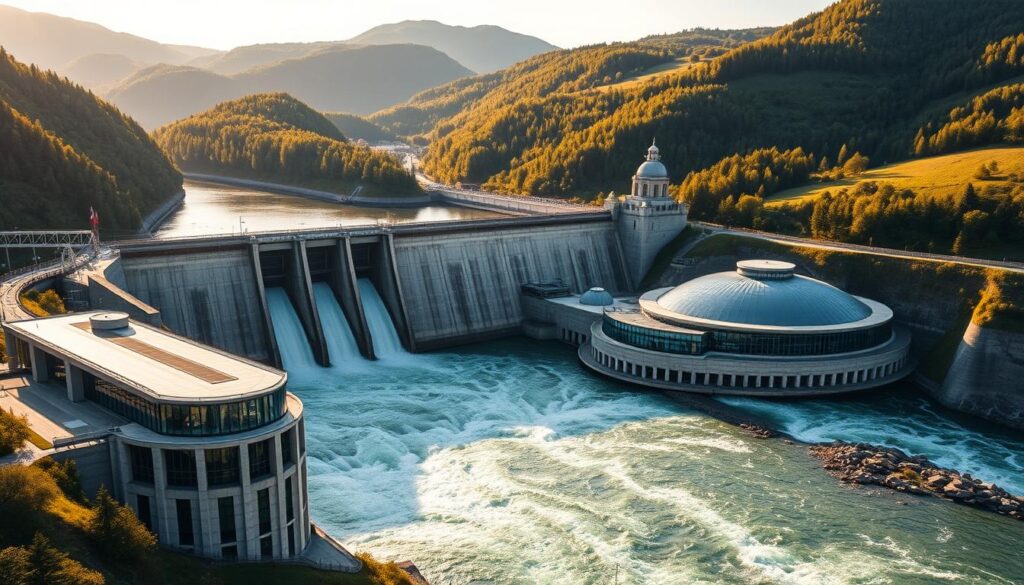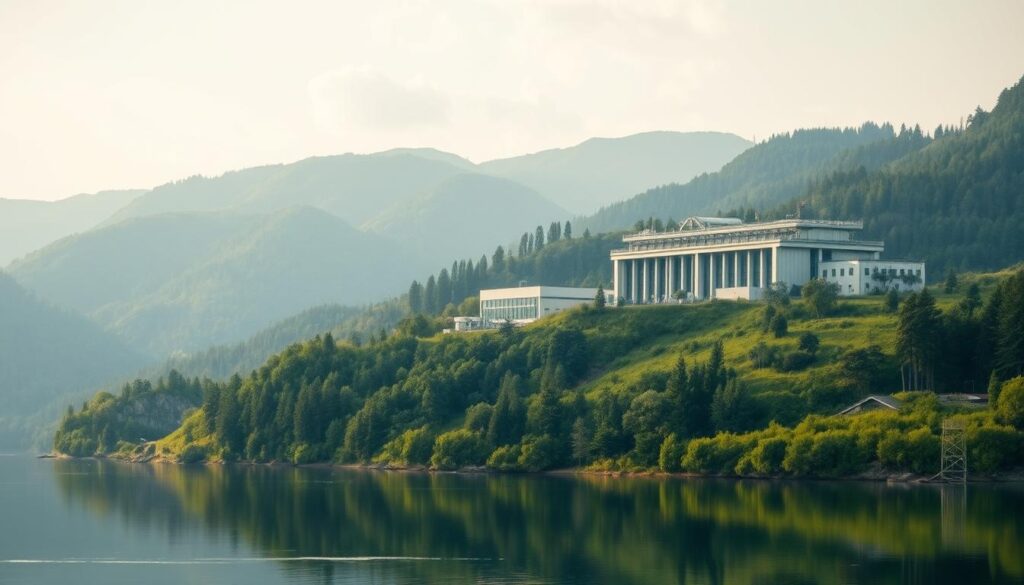
Hydropower has grown a lot since the 1920s. It’s now a big part of clean energy. This growth helps the hydropower industry and supports renewable energy.
There have been big steps forward in the industry, from early ideas to today’s tech. The rise of hydropower has made a big difference for the planet and the economy. As you explore hydropower, you’ll see how it’s crucial for our energy needs and for growing renewable energy.
Table of Contents: since the 1920’s hydropower production has
Introduction to since the 1920’s hydropower production has
Hydropower has changed a lot since the 1920s. It shows how smart people work to find better energy. You’ll learn what has made the hydropower industry grow and why renewable energy matters to us all.
Key Takeaways: since the 1920’s hydropower production has
- Since the 1920’s hydropower production has transformed the energy sector
- Hydropower industry growth is driven by the demand for renewable energy sources
- Hydropower is a crucial component of the global energy mix
- Rapid advancements in technology have shaped the hydropower industry
- Hydropower production has a significant impact on the environment and the economy
- Reneable energy sources like hydropower are essential for a sustainable future

The Foundation Years: How Since the 1920’s Hydropower Production Has Transformed Energy Generation
Exploring the history of hydropower shows its big impact on the environment and economy. The first hydroelectric power plants started in the 1920s. These early plants were small but set the stage for bigger, more advanced ones.
The hydroelectric power plants evolution was shaped by key projects. The Hoover Dam and Grand Coulee Dam were major milestones. They showed the power of hydroelectric energy and pushed for new ideas. At the same time, people began to think about how to use energy in a way that’s good for the planet.
Several things helped hydropower grow:
- Advances in turbine technology
- Improvements in dam design and construction
- Increased investment in hydroelectric power plants
The history of hydropower is key to the US energy scene. As you delve deeper, you’ll see the big tech leaps, government actions, and green efforts that shaped the industry.
Major Technological Breakthroughs in Hydropower Engineering
Exploring hydropower history shows us how hydropower technology advancements have boosted efficiency and reliability. New turbine designs, materials, and control systems have made power plants bigger and cheaper. This has also reduced their environmental impact.
The effects of hydroelectric technology advancements on the environment are huge. Modern hydroelectric plants are built to harm local ecosystems less. Key breakthroughs include:
- Improved turbine designs for better energy conversion
- New materials for stronger, larger power plants
- Advanced control systems for more reliable plants
These advances come from ongoing research in hydropower engineering. The goal is to make energy more sustainable and efficient. As we need more renewable energy, hydropower technology advancements will become even more vital.
Investing in hydroelectric technology advancements helps us move towards a sustainable energy future. It reduces our need for fossil fuels and fights climate change. Remember, innovation and investment in hydropower are key for a cleaner, greener energy future.
The Role of Government Initiatives and Public Works Projects
Looking into hydropower production history reveals the impact of government efforts. These efforts have made hydro energy sustainability better, improved energy security, and reduced environmental damage. Government support has been crucial in growing renewable energy sources.
The story of hydropower is closely tied to renewable energy origins. Government backing has been key in promoting hydropower, focusing on sustainability. Some major initiatives include:
- Investing in infrastructure to support hydropower production
- Implementing policies to encourage renewable energy sources
- Providing funding for new hydropower technology research
These efforts have driven the growth of the hydropower industry. They highlight hydro energy sustainability and renewable energy origins. Understanding government roles in hydropower history shows their crucial role in renewable energy development.
The effects of these initiatives are clear in hydropower’s growth, focusing on sustainability and renewable energy. Learning about government roles in hydropower production deepens our appreciation for the industry’s history and sustainability.
Environmental Considerations and Sustainable Development
When thinking about the future of hydropower, we must consider the environment and sustainability. The hydroelectricity evolution has shown us the importance of green energy. Since the 1920’s, hydroelectric power has changed how we make energy, raising questions about its environmental impact.
The growth of hydro energy aims to lessen its harm to nature. Today’s hydroelectric plants are built to be kinder to the planet. Many believe hydropower can help cut down on pollution and fight climate change. The 1920’s hydroelectric power plants were the first step, and we’ve made big strides since then in hydro energy development.
Important aspects of sustainable hydroelectricity evolution include:
- Renewable energy source
- Low greenhouse gas emissions
- Reliable and consistent power generation
In conclusion, the future of hydropower depends on caring for the environment and being sustainable. As we move forward with hydroelectricity evolution, we must focus on green and responsible practices. This will help keep hydropower a reliable and renewable energy source for years to come.
Modern Innovations in Hydroelectric Generation
Exploring the latest in hydroelectric power shows how far we’ve come. The 20th century saw big steps forward in hydropower technology. Today, we see a move towards better, greener ways to make electricity. For example, new turbine tech lets us build bigger, more efficient plants.
Digital control systems have made energy production more reliable and flexible. They let us watch and adjust power plant work in real time. This means less time off and more power made. Plus, new materials and designs, like composite materials and optimized blade designs, boost efficiency.
Modern hydroelectric generation brings many benefits:
- Increased energy efficiency
- Improved reliability and flexibility
- Reduced environmental impact
- Enhanced operational safety
In short, today’s hydroelectric tech has changed the game. It’s making power plants more efficient, reliable, and green. As we need more clean energy, hydroelectric power will play a bigger role. This is thanks to ongoing tech advances and good trends in hydropower.
| Technology | Benefits |
|---|---|
| Advanced Turbine Technologies | Increased energy efficiency, improved reliability |
| Digital Control Systems | Real-time monitoring, optimized operations, reduced downtime |
| Efficiency Improvements | Reduced environmental impact, enhanced operational safety |
Economic Impact and Global Energy Markets
Hydropower’s role in global energy markets is huge. The hydropower industry growth has been fast in recent years. This is thanks to more demand for renewable energy sources and better technology.
This growth has brought jobs and boosted local economies where power plants are built. It’s a key part of local economies.
The hydropower production history shows the industry’s ability to change and grow. It started with traditional hydroelectric power plants. Now, it includes new technologies and innovations.
So, hydropower is a big player in the global energy market. It offers a clean and reliable energy source.
Several factors are driving hydropower’s economic impact. These include:
- Government efforts to support sustainable development
- More demand for renewable energy sources
- Advances in technology and efficiency
These factors have helped the hydropower industry grow. It’s now a crucial part of the global energy scene. With a rich hydropower production history and a promising future, hydropower is key in global energy markets.

Conclusion: since the 1920’s hydropower production has
Looking back at hydropower production since the 1920’s, we see a huge change. Advances in technology and government support have made hydropower key in renewable energy. It looks set to be a major player in future energy systems.
The growth of hydro energy is essential for clean, steady electricity. New turbine tech and digital controls will make plants more efficient and green. As more focus is put on renewable energy, hydropower will become even more appealing.
Yet, the industry faces hurdles like environmental issues and funding needs. Still, with smart planning and tech, hydropower’s future in renewable energy is promising. It offers a green way to power communities around the world.
FAQ: since the 1920’s hydropower production has
How has hydropower production transformed since the 1920s?
Hydropower has changed a lot since the 1920s. It’s grown from a small energy source to a big part of renewable energy. New power plants, better turbines, and engineering advances have helped it grow.
What were the key technological breakthroughs that shaped the hydropower industry?
The hydropower industry has seen big tech advances. These have made power plants more efficient and reliable. New turbine designs, materials, and control systems have helped build bigger plants. This has also made energy cheaper and less harmful to the environment.
How have government initiatives and public works projects influenced the growth of hydropower?
Governments and public works have been key to hydropower’s growth. Programs like the Tennessee Valley Authority and the Federal Power Act have helped. They’ve promoted hydropower, improved energy security, and lessened environmental harm.
What are the environmental considerations and sustainable development goals related to hydropower?
The hydropower industry now focuses on being sustainable and responsible. Modern plants aim to have a small ecological footprint. Many see hydropower as key to cutting greenhouse gas emissions and fighting climate change.
What are the latest innovations in hydroelectric generation?
The hydropower industry is seeing a lot of new ideas. There are advanced turbines, digital control systems, and ways to make plants more efficient. These changes have made plants more reliable and sustainable.
What is the economic impact and role of hydropower in global energy markets?
Hydropower has had a big economic impact. It’s grown fast in recent years. This growth is driven by demand for clean energy, tech advances, and government support. Hydropower is now a key player in global energy markets, creating jobs and boosting local economies.
